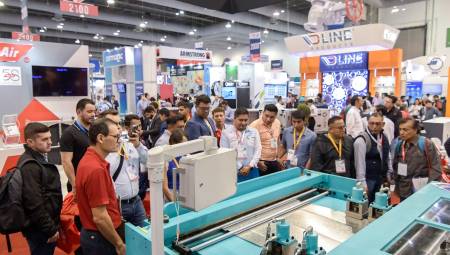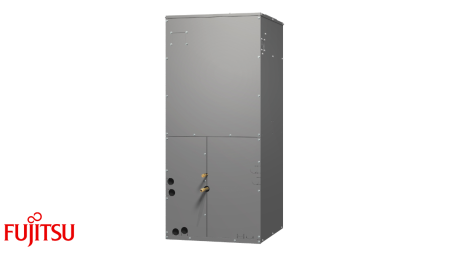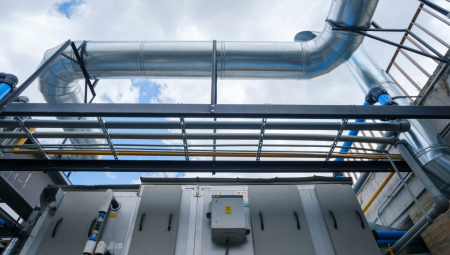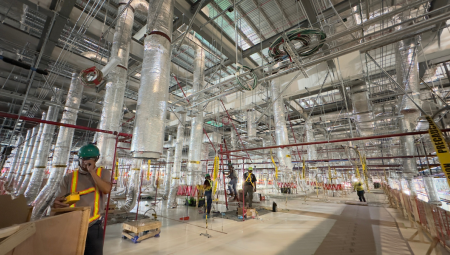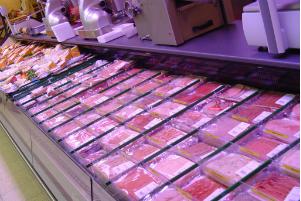 The CO2 refrigerant is a solution that in Latin America has not stepped on with force or competed with the other solutions available on the market. Two experts discuss its implementation and desirability.
by Duván Chaverra A.
The CO2 refrigerant is a solution that in Latin America has not stepped on with force or competed with the other solutions available on the market. Two experts discuss its implementation and desirability.
by Duván Chaverra A.
When talking about refrigerants, the different options available come to mind. So you think of water, ammonia, and all the types of refrigerants that are recognized in the industry as HCFCs (hydrochlorofluorocarbons) and HFCs (hydrofluorocarbons).
It is then also analyzed that in addition to these classes of refrigerants, there is another option, although it is not novel, because for years it has been tested in several systems, nor has it been commonly implemented within the Latin American territory. It's about CO2.
For many, CO2 is a different alternative, which is even classified as the refrigerant of the future. For others, it is only about selling the idea that it is an environmentally friendly refrigerant that saves energy, but that at the time of competing leaves several doubts in its performance.
But it is better for experts to talk about the subject. For that reason we have the participation of Germán Robledo, sales director for Latin America of Vilter, and Gerardo Martínez, sales director of Central America, the Caribbean, Colombia, Venezuela and Ecuador of Bitzer.
Both guests agree that the use of CO2 in supermarkets and large chains is minimal in Latin America, although their arguments are different. Europe is the market that is most implementing this type of solutions, especially for its environmental image and energy savings based on the damage caused by freons, and with the idea of reducing the amount of ammonia in other plants to make them safer in case of a leak.
Germán considers that co2 refrigerant is sold as an energy saver, but that the savings it produces are really little.
"The evolution of the CO2 cooling market is slow, it is more a fascination that customers hear about energy saving, and they believe it completely, but without studying with the full background of the case what it is and is not; the savings are not so real and in all cases, it has been seen in many plants in Europe that already has most plants or systems that already have CO2, that you do not see the savings or true savings, rather this alternative helps to catalog the company as green or environmental, if it is what they are looking for, but there is no savings."
For his part, Gerardo commented that the region is behind in terms of its consumption and regulations for its use: "At first we paid a surcharge, but over time it stabilizes in the international market. As for CO2 systems, there are few in supermarkets or large warehouses operating under this system in Latin America. If we talk about the regulations to use systems with CO2 as a refrigerant, we are even further behind. Both in the safety part and in the ecological part there is no regulation or guidelines, so the manufacturers of these equipment use the existing ones in Europe or the United States. The overpricing and lack of regulations make the use of CO2 systems in supermarkets and large warehouses slow."
Robledo assures that in supermarkets this kind of solutions is not used in large quantities: "CO2 is not new, it is old, it is being taken up as a solution to replace other refrigerants with some more friendly to the environment to beat the freons and less toxic to beat the ammonia. But the past is forgotten and we are deceived into believing that it is something new and that it is the best. Nothing has changed since it was used in the principles of refrigeration; what has changed is the design and construction of the equipment with the new or discovered materials in this era to use it again."
Characteristics
Germán Robledo argues that not everything that is said about CO2 should be believed: "Energy savings are assumed because by using less AMOUNT of CO2, compared to other refrigerants, compressors and motors come out smaller, and in this idea it is considered that it consumes less energy. Less HP is used per TR, but in reality it must be condensed with some alternating refrigerant such as freon or ammonia and there the HP per TR rebalance the system or the savings are lost. A leak won't be as deadly or harmful as an ammonia or freon leak, but it's still dangerous and people still don't understand this.
While Gerardo says that "the advantages are mainly ecological, both to reduce the emissions footprint and, in certain cases, to reduce electricity consumption. How is it different from the other alternatives? A natural refrigerant is used and the use of the amount of synthetic refrigerants is decreased. The latter are the ones that contribute to global warming and some also damage the ozone layer. Due to the characteristics and properties of CO2, it has to be used in cascade systems or as a secondary refrigerant. Although the latter is not the most efficient."
In conclusion
The most important thing when selecting a CO2-based cooling system is to get advice and indicate exactly what type of application it is required for. Currently, Latin America will not see this market grow in the near future, however, it is possible that in a few years CO2 will compete with the other existing alternatives.To highlight
To keep in mind
Germán Robledo, sales director for Latin America at Vilter, mentions some references that must be taken into account if CO2 is implemented as a refrigerant:
- The range of pressures is so dangerous that there must be a backup or redundancy system to avoid reaching them, that is, there must always be a secondary or backup system if the primary fails. Otherwise you enter into serious danger of high pressures, and accidents of high pressures (almost the range of 1000 psig) at room or daily temperature.
- The defrosts or thaws of evaporators can not be done in a habitual form of hot gas as with other refrigerants, you should look for options of electrical or water resistors or double circuit with some hot medium, but all are of investment and expensive operation.
The valves should be made of stainless steel to avoid pressure drops, which can cause deficiencies in any system; again, it's a very high investment.
- The investment or installation due to high pressures is very high. It must be made with more resistant materials, and this means a high price.
- Operators must be trained to deal with CO2, but there are no entities, institutions, companies or people who are doing it, but there are no experts, there are no schools and so far very little has been written about the subject. Poor operation or maintenance by an unqualified technician puts your life, the lives of others, and the equipment and system at risk compared to other refrigerants on a larger scale.







